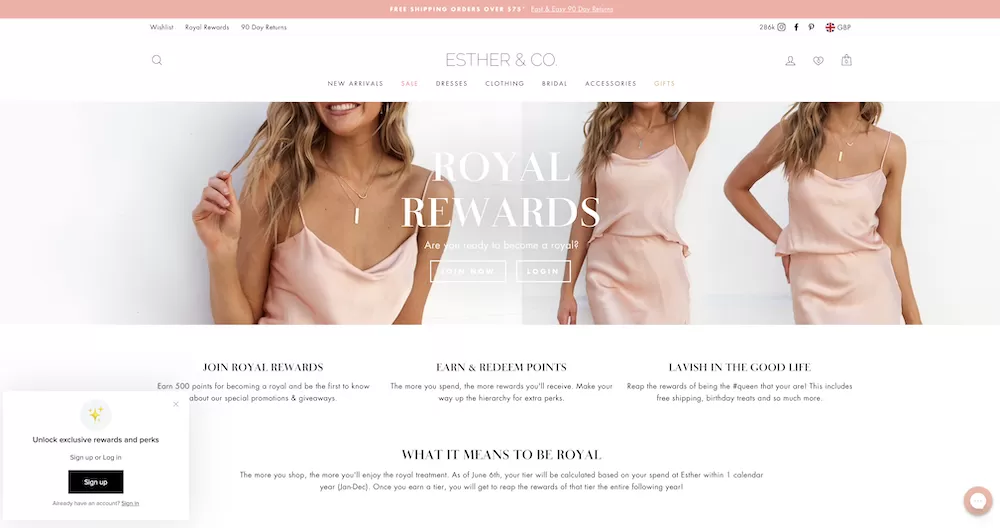Want to make money online, but don’t know where to start? No need to worry – through this article, you will explain how to monetise a website to turn it into a money-making machine.
To get the results you want, there’s a universal quality that every profitable website should possess ‒ traffic. Without traffic, you won’t be able to make any money.
Selling Products or Services
If you have the products and the skills to sell them and don’t want to deal with the hassle of opening a physical store, you should consider opening an online storefront.
The process of making an online store is a bit more complicated than just creating a simple website. However, that does not mean that you can’t have an ecommerce store up and running in a few days.
How to monetise a website via ecommerce:
- Set your niche.
- Search domain names, and choose the perfect domain name.
- Buy a web hosting plan.
- Select and use an ecommerce platform.
- Design your store by browsing through themes and customising it.
- Source products or source even more products to sell online.
- Add your products by navigating to Products -> Add New on the sidebar
- Consider dropshipping for an easy life, more dropshipping ideas here.
- Start marketing and get your first sale.
Pay Per Click Advertising with Google AdSense
PPC is an online advertising model where website owners earn passive income each time a reader clicks on an advertisement banner. The most popular tool for this is Google AdSense.
Google AdSense is one the easiest ways to make extra money as it doesn’t require much effort to set up. The website owner can quickly and simply place ads on the blog or website. Another great thing is that you can still apply to be an AdSense partner even if you have multiple sites.
Due to the immense support from Google, publishers won’t have to worry about setting things up. Customer forums and tutorials are also available for users to help them get started.
So how much will you be getting?
- 68% of the revenue on AdSense for content
- 51% on AdSense for search ads
The best part is that Google will always pay you on time, usually between the 21st and the 26th of the month.
How to monetise a website with Google AdSense:
- Read the Terms and Conditions. Make sure that your website meets all the criteria.
- Proceed to sign up for AdSense and wait for approval.
- Once your account has been approved, simply embed the JavaScript code into a widget.
- Place the ads anywhere you like on your website.
Omnichannel Marketing
Omnichannel marketing is the seamless integration of branding, messaging, and online and offline touchpoints as consumers move down the sales funnel, enabling a more impactful customer experience.
Omnichannel marketing takes a consumer-centric view of marketing tactics. Consumers can now interact with brands on innumerable channels, from social media to customer service hotlines. An omnichannel approach ensures that the consumer has a positive, consistent experience on each channel, by offering a few key elements:
- Consistent, identifiable brand tone and vision
- Personalized messaging based on specific interests
- Content that is informed by past interactions and the current stage of the buyer’s journey
An identifiable brand simplifies brand recognition, while personalization based on interests and shopping history makes consumers more likely to interact with branded content across channels. This is marketing across social media sites.
Affiliate Marketing
If you have a talent for reviewing or promoting products, you can try to start affiliate marketing to monetise a website.
Through affiliate links, you can earn commissions when readers buy the products or services of the companies that you affiliate with.
Affiliate marketing is one of the easiest methods to earn passive income if your website has an active user base that will listen to your opinion.
How to monetise a website via affiliate marketing:
- Create an affiliate website that focuses on recommending and promoting products or, post an item or service review related to your content.
- Join affiliate programs such as Amazon. Otherwise, search Affiliate tools or networks like ShareASale and CJ Affiliate.
- Include affiliate links in your content organically.
Coupons with Affiliate Links
Roughly 97% of consumers look for deals when they shop. Another form of affiliate marketing can be offering coupons from affiliate partners.
Rakuten is the leader when it comes to online discounts and coupons. The site attracts customers and directs them to merchants they’ve partnered with, earning commissions along the way.
Putting up coupons on your site is an opportunity to attract more traffic.
So what are the options?
- Post coupons from affiliate partners/programs you’ve joined to your existing sites.
- Contact your local and national retailers for deals you can promote on your website.
- Create sites dedicated to offering coupons. These can be general, such as coupons.com, or specific, like Holidayers.
Sponsored Content
Sponsored content is a collaboration between you as a publisher and the brands that you’re partnering with. Whether you’re starting a blog or building a website, sponsored content is a lucrative channel. Businesses pay you to create content for them and publish it on your site.
The content can be in the form of product or sales announcements, offers, infographics, or reviews. They can be written by you or by the sponsoring brand itself. You can charge a higher rate If you’ll be writing the post as well as publishing it on your website.
Before starting to create sponsored content, you should consider these few points:
- How much influence do you have online?
- The number of sponsored posts you’ll be writing each month.
- How much time do you spend creating the content?
- Brand value (the sponsored content vs. your blogging brand).
BuzzFeed, for example, can charge around $100,000 for a sponsored content piece. This is due to its high influence and brand value.
How to monetise a website via sponsored posts:
- Start small – Kristy Ellington, a content marketer, and strategist recommends starting with smaller national brands and companies.
- Build up a portfolio.
- Partner with marketing and PR agencies.
- Search around sponsorship markets such as Tomoson, Cooperatize, and PayPerPost.
Sponsored content is a viable way to generate income through your website. Just remember to be transparent with your readers.
Conclusion
Earning money from managing a site can be an exciting experience. However, monetising a website needs time, dedication, and most importantly – traffic.
We discussed ten different ways to monetise a website. Let’s take a final look:
- Google AdSense ‒ display ads while Google does all the work.
- Selling Ad Space ‒ directly connect to advertisers, managing your ads while maximising your earnings.
- Affiliate Marketing ‒ join affiliate programs and enter the affiliate market to earn commissions.
- Selling Your Products ‒ charge people for goods and services.
- Omnichannel Marketing – sell on Instagram, Twitter, Snapchat, Facebook etc
- Sponsored Content ‒ collaborate with businesses and get paid.
- Coupons with Affiliate Links ‒ offer coupons and discounts from partnered merchants.
Once you have your customers, you next need to be able to keep them, then you need to be able to monetise that privilege. For this, the leading solution is hyper-personalisation marketing. SwiftERM offers hyper-personalisation software that installs as a plug on a free 30-day trial.





